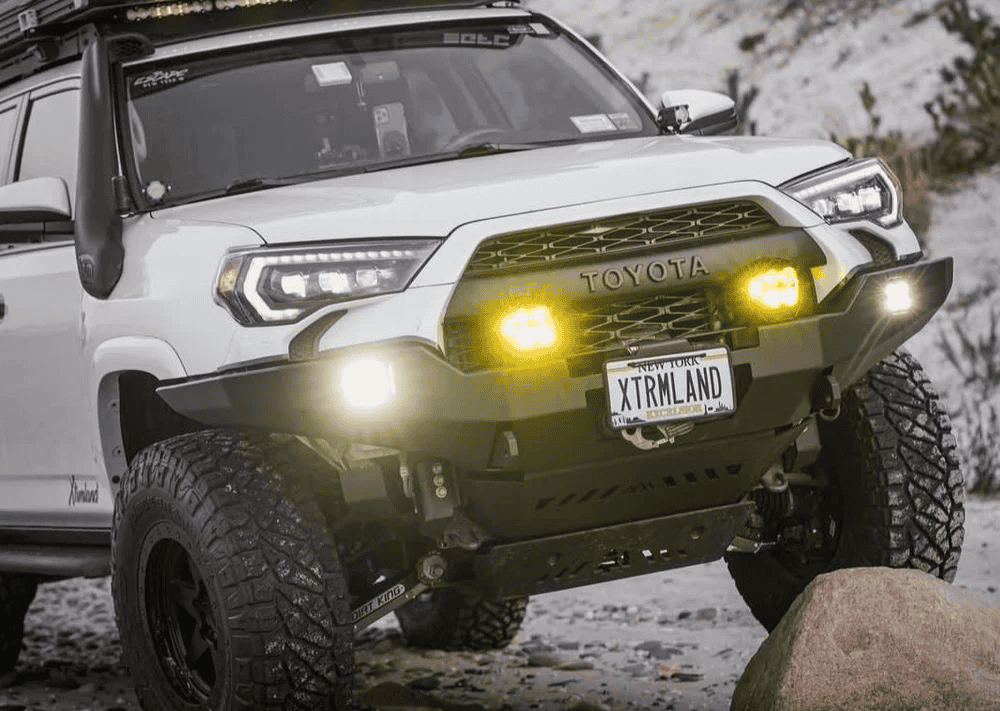Overland Vehicles

Choosing among 4x4 truck campers starts with payload and center of gravity. Your truck’s door jamb payload sticker sets the ceiling, and the camper’s dry weight rarely reflects a real trip once you add water, fuel, food, gear, and passengers. Look for a center of gravity that lands forward of the rear axle to keep steering precise and braking predictable on rough tracks.
Power and water determine how long you can stay remote. For the best overland truck camper, evaluate amp hours of lithium storage, solar intake, DC to DC charging, and inverter size for cooking and laptops. Fresh, gray, and optional black water capacity should match your daily use and your refill intervals. A simple calculation of gallons per day multiplied by your target days off grid keeps expectations honest.
Insulation, airflow, and condensation control matter as much as raw heating power. Hard side shells often win at thermal retention, while well built pop up liners with insulated soft walls narrow the gap. Cross flow ventilation, insulated window coverings, and a moisture management plan help bedding stay dry across shoulder seasons.
Interior layout drives daily comfort. Tall sleepers may need an east west bed delete for a north south mattress. A galley that allows one person to cook while another grabs the fridge changes how the space feels on rainy days. If you plan to remote work, budget space for a seat height desk that does not interfere with the bed or bath.
Storage needs differ by season. Long items like recovery boards, skis, and awnings demand tie down points and weatherproof access. Inside, dedicated cubbies for tools, spares, and soft goods keep your center of gravity low and reduce rattles.
Aim for lithium batteries sized to your highest load day with a twenty five percent buffer. Pair with rooftop solar and a truck alternator charger to recover during travel days. Set water targets by trip length and climate, then add a filtration plan for backcountry fills.
Airbags and helper springs are band aids if the camper exceeds payload. Better is a matched suspension with tuned leafs or coils and quality shocks. Proper weight distribution preserves braking and traction on loose climbs.
Test the bed turn down and morning tear down. Check sightlines from the cooktop to the door, and measure headroom at the dinette. Small ergonomic wins add up in real use.
A pop up truck camper shines in wind and trees thanks to its low travel profile. The lower height reduces drag, helps fuel economy, and slips under branches that would knock a tall rig. Once raised, soft wall insulation quality sets the comfort baseline, and modern fabrics with multi layer panels can surprise you in cold weather.
Hard side slide in designs deliver stronger sound and temperature control and often handle snow load better. They also allow for taller cabinets, larger windows, and more robust wall mounting options. The tradeoff is overall height and sometimes an extra step in the center of gravity that you must balance with suspension and tire choice.
When reading slide in camper reviews, look for testing across varied terrain. Corrugated roads expose build quality in a hurry, and reviewers who measure dust ingress, latch integrity, and cabinet rattle provide insights you can trust. Truck camper reviews that include camp setup times, roof lift effort in wind, and sleep quality in heat waves or freeze nights are especially valuable.
For the best truck camper to live in, prioritize standing height, a bed you do not have to remake daily, and a heater that can idle quietly overnight. In warm climates, a window layout that supports cross breeze may matter more than total R value. An overland pop up truck camper with an efficient lift system and insulated soft wall can be a strong year round option for travelers who value tight forest access.
Hard side shells resist drafts, while premium pop up liners use layered materials and quilted panels to close the gap. Add thermal window covers and manage moisture with vent fans.
Manual, gas strut, or electric lifts each have pros. If you carry boards or solar up top, choose a lift that handles the extra mass without strain.
Favor metal latches, positive locking drawers, and hinges rated for vibration. Dust seals and compression latches reduce interior grime on desert tracks.
If your research has you leaning toward 4x4 truck campers but you want guidance on power, water, and suspension, our team builds trucks to match real routes and weather. Explore our overland rigs to see how we balance weight, storage, and comfort for remote travel. When you are ready to tailor a platform for your truck, start a custom overland upfit that integrates electrical, racks, lighting, and recovery. Curious how we work and why owners trust us with long range builds, read why choose OZK Customs.
We design and install complete systems in Fayetteville Arkansas, with thoughtful handoff and real world walkthroughs so you leave confident. Share how you travel, and we will map the camper, gear, and systems that turn your truck into a capable basecamp.
Build a rig that matches your routes, seasons, and payload. From complete overland conversions to targeted upfits, OZK Customs designs and installs the systems that keep you comfortable and confident off grid. Tell us how you travel, and we will spec the camper, power, storage, and recovery package to suit. Submit the form and let our Fayetteville Arkansas team turn your truck into an expedition ready home.
ADDRESS:
6159 E Huntsville Rd, Fayetteville, AR 72701
PHONE:
(479) 326-9200
EMAIL:
info@ozkvans.com